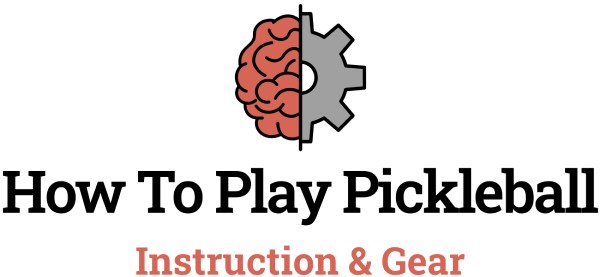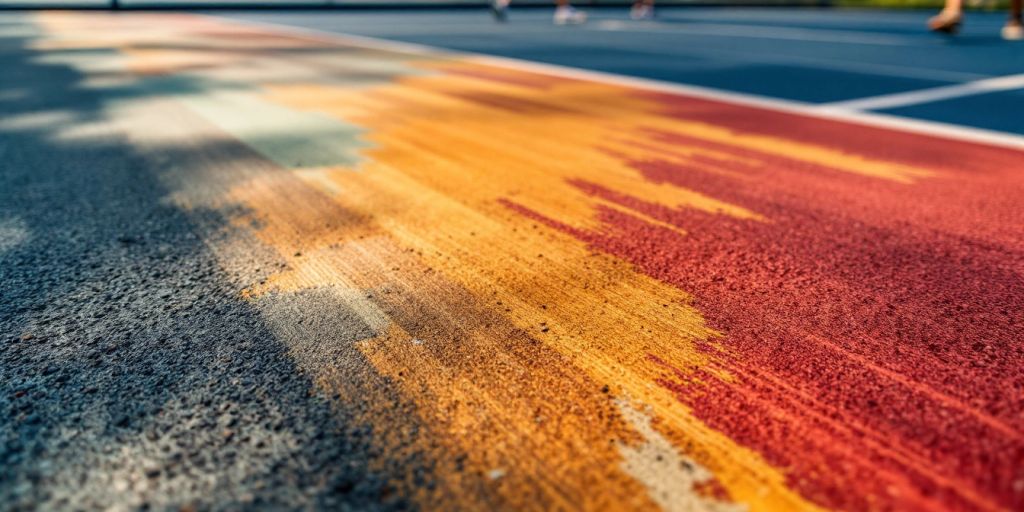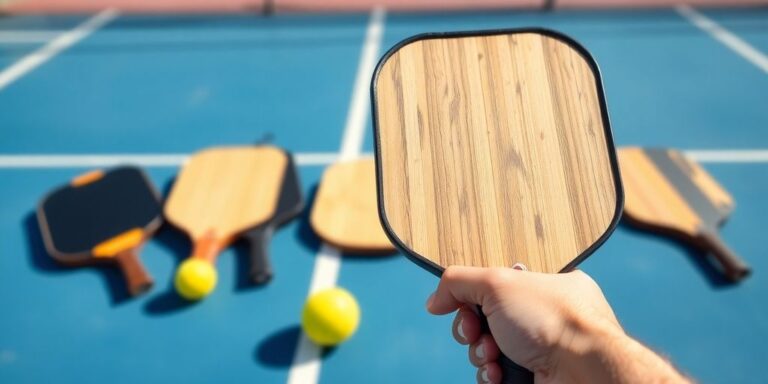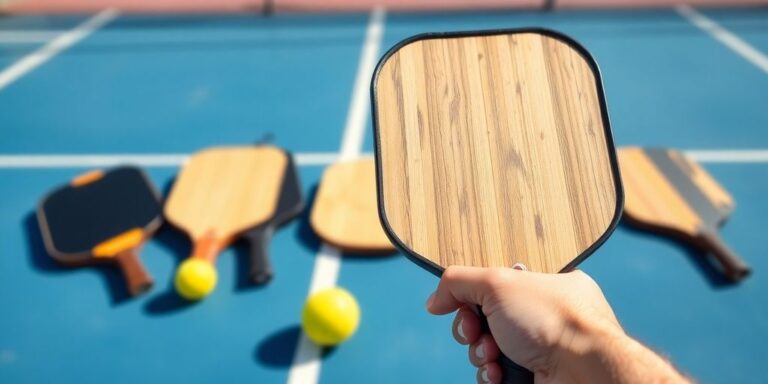Pickleball is an exciting sport that’s gaining popularity, and the surface you play on can really affect your game. Choosing the right surface is important for comfort, safety, and overall performance. In this guide, we will explore the best surfaces for pickleball courts, helping you make an informed decision whether you’re building a new court or converting an existing one.
Key Takeaways
- Concrete and asphalt are commonly used for outdoor courts due to their durability and low maintenance.
- Acrylic surfaces provide excellent traction and consistent ball bounce, making them ideal for serious players.
- Wooden courts offer a smooth experience but require more upkeep, especially in multi-use spaces.
- Synthetic surfaces can be softer on joints but may alter the ball’s bounce compared to harder surfaces.
- Consider player preferences and budget when selecting the best surface for your pickleball court.
Understanding Pickleball Court Surfaces

Importance of Surface Selection
Choosing the right surface for a pickleball court is crucial. The surface affects gameplay, player comfort, and maintenance needs. Different surfaces can change how the ball bounces and how players move, making it essential to consider personal preferences and playing styles.
Factors Influencing Surface Choice
When selecting a court surface, consider the following factors:
- Player Experience: Beginners may prefer softer surfaces for comfort.
- Weather Conditions: Outdoor courts need to withstand rain and sun.
- Budget: Some surfaces are more affordable than others.
Impact on Gameplay
The surface of a pickleball court can significantly influence the game. For instance, asphalt courts are one of the most common surfaces used for outdoor pickleball. They are easy to maintain and can be found in many public parks. The choice of surface can affect:
- Ball Bounce: Hard surfaces like concrete provide a consistent bounce.
- Player Movement: Softer surfaces can reduce strain on joints.
- Game Speed: Different materials can speed up or slow down the game.
The right surface can enhance the overall pickleball experience, making it enjoyable for players of all levels.
Concrete and Asphalt: Popular Choices

Benefits of Concrete Courts
Concrete courts are a favorite among many players due to their consistent bounce and low maintenance needs. Here are some key points:
- Durability: Concrete is very strong and can last for many years.
- Predictable Play: The ball behaves consistently, which helps players strategize better.
- Low Maintenance: Once installed, concrete courts require minimal upkeep.
Advantages of Asphalt Surfaces
Asphalt courts are also quite popular, especially for outdoor play. They offer several benefits:
- Joint-Friendly: Asphalt is easier on the joints compared to concrete, making it a good choice for players concerned about injuries.
- Cost-Effective: The initial installation cost is generally lower than concrete.
- Good Bounce: Asphalt provides a consistent bounce, similar to concrete.
Maintenance Considerations
Both surfaces require some maintenance, but the frequency and type can differ:
- Concrete: Needs occasional resurfacing and sealing to prevent cracking.
- Asphalt: Requires more frequent maintenance, including resurfacing and patching due to weathering.
| Surface Type | Initial Cost | Maintenance Frequency | Bounce Consistency |
|---|---|---|---|
| Concrete | Higher | Low | High |
| Asphalt | Lower | Medium | Medium |
Choosing between concrete and asphalt depends on your specific needs, budget, and how often you plan to play. Both surfaces have their unique advantages, making them popular choices for pickleball courts.
Exploring Synthetic and Acrylic Surfaces
Features of Acrylic Sports Surfaces
Acrylic sports surfaces are widely recognized for their durability and excellent performance. They are often used in professional settings and provide a consistent playing experience. Key features include:
- Good Traction: Helps players maintain their footing during play.
- Consistent Bounce: Ensures the ball behaves predictably, enhancing gameplay.
- Weather Resistance: Suitable for both indoor and outdoor courts.
Synthetic Surface Benefits
Synthetic surfaces offer several advantages that make them appealing for pickleball courts:
- Joint Protection: Softer surfaces reduce impact on players’ joints.
- Versatility: Can be used for multiple sports, making them a great choice for multi-use facilities.
- Low Maintenance: Requires less upkeep compared to traditional surfaces.
Comparing Synthetic and Acrylic
When choosing between synthetic and acrylic surfaces, consider the following:
| Feature | Acrylic Surfaces | Synthetic Surfaces |
|---|---|---|
| Durability | High | Moderate |
| Traction | Excellent | Good |
| Cost | Higher | Lower |
| Maintenance | Moderate | Low |
In summary, both synthetic and acrylic surfaces have unique benefits. Choosing the right surface depends on your specific needs and preferences, ensuring a great playing experience for all.
Wood and Indoor Court Options
Pros of Wooden Courts
Wooden courts are a popular choice for indoor pickleball due to their natural feel and excellent performance. Here are some benefits:
- Comfortable Surface: Wooden floors provide a softer landing, which is easier on players’ joints.
- Aesthetic Appeal: The warm look of wood can enhance the overall atmosphere of the court.
- Consistent Bounce: Wood offers a reliable bounce, making it easier for players to predict ball behavior.
Indoor Surface Considerations
When setting up indoor courts, several factors should be taken into account:
- Lighting: Proper lighting is essential for visibility. Fluorescent lights are commonly used to ensure a well-lit playing area.
- Flooring Type: While hardwood is preferred, synthetic options can also be considered for their durability and joint support.
- Space Requirements: Ensure there is enough space around the court for players to move freely, ideally a minimum of 10 feet clearance.
Maintenance of Wood Surfaces
Maintaining wooden courts is crucial for longevity. Here are some tips:
- Regular Cleaning: Sweep or vacuum the court to remove dust and debris.
- Moisture Control: Keep the humidity levels stable to prevent warping.
- Periodic Refinishing: Refinish the surface every few years to maintain its quality and appearance.
Wooden courts can provide a fantastic playing experience, but they require careful maintenance to keep them in top shape. Proper care ensures a great environment for both casual and competitive play.
Innovative Surface Materials
Emerging Trends in Court Surfaces
In the world of pickleball, new materials are being developed to enhance the playing experience. Some of the latest trends include:
- Eco-friendly options: Sustainable materials that reduce environmental impact.
- Shock-absorbing surfaces: Designed to minimize injuries and improve comfort.
- Customizable designs: Courts that can be tailored to reflect personal or community branding.
Vinyl Flooring for Pickleball
Vinyl flooring is gaining popularity for its durability and ease of maintenance. Here are some key benefits:
- Water-resistant: Ideal for outdoor conditions.
- Variety of colors: Allows for creative court designs.
- Soft surface: Provides comfort during play, reducing strain on joints.
| Feature | Vinyl Flooring | Traditional Surfaces |
|---|---|---|
| Durability | High | Moderate |
| Maintenance | Low | High |
| Comfort | High | Low |
Future of Pickleball Court Design
As the sport grows, the design of pickleball courts is evolving. Key considerations for the future include:
- Smart technology: Integration of sensors to track player performance.
- Modular designs: Courts that can be easily assembled and disassembled.
- Community-focused spaces: Courts that serve as multi-use areas for various sports.
The choice of court surface can greatly affect gameplay and player enjoyment. Investing in innovative materials not only enhances performance but also ensures a safer playing environment.
By exploring these innovative materials, players and facility owners can create the best possible experience on the court, ensuring that pickleball remains a fun and engaging sport for everyone.
Maintenance and Care for Pickleball Courts
Routine Maintenance Tips
Maintaining a pickleball court is essential for ensuring a safe and enjoyable playing experience. Here are some key maintenance tips:
- Regular Cleaning: Sweep or vacuum the court to remove dirt and debris. This helps prevent damage to the surface.
- Moisture Management: After rain, check for water pooling and ensure proper drainage to avoid mold growth.
- Crack Repair: Monitor for cracks and use appropriate materials for repairs. Resurfacing may be needed every five years for asphalt and concrete courts.
Handling Surface Wear and Tear
To keep your court in top shape, consider the following:
- Inspect Regularly: Look for signs of wear, such as cracks or fading lines.
- Use Proper Equipment: Utilize tools like a squeegee for water removal and a water broom for cleaning.
- Schedule Repairs: Address any issues promptly to prevent further damage.
Enhancing Court Longevity
To extend the life of your pickleball court, follow these practices:
- Choose Quality Materials: Invest in durable surfaces that withstand weather and heavy use.
- Implement a Maintenance Schedule: Regular upkeep can prevent costly repairs down the line.
- Educate Players: Encourage players to respect the court and follow rules to minimize wear.
By following these maintenance tips, you can ensure that your pickleball court remains in excellent condition, providing a great experience for all players. Regular care is key to longevity!
Choosing the Right Surface for Your Needs
Assessing Player Preferences
When selecting a pickleball court surface, it’s essential to consider what players enjoy. Here are some factors to think about:
- Comfort: Some players prefer softer surfaces that are easier on the joints.
- Bounce: Different surfaces provide different ball bounces, affecting gameplay.
- Speed: The speed of the game can change based on the surface type.
Budget Considerations
Your budget will play a significant role in your choice of surface. Here are some options:
- Concrete: Generally the most affordable and durable option.
- Asphalt: A popular choice for outdoor courts, often less expensive than other surfaces.
- Acrylic: While it may cost more, it offers professional-level play and durability.
Long-term Surface Planning
Thinking ahead is crucial when choosing a surface. Consider these points:
- Maintenance: Some surfaces require more upkeep than others, impacting long-term costs.
- Durability: Investing in a more durable surface can save money in the long run.
- Usage: If the court will be used frequently, a more robust surface may be necessary.
Choosing the right surface is not just about immediate needs; it’s about ensuring a great experience for years to come. Understanding the differences in pickleball court surfaces can help you make an informed decision that enhances gameplay and enjoyment.
When it comes to selecting the best surface for your pickleball games, it’s important to consider your specific needs. Different surfaces can affect your play style and comfort. For expert advice and resources, visit our website to learn more about making the right choice for your game!
Conclusion
In conclusion, choosing the right surface for a pickleball court is important for a great playing experience. Each type of surface has its own benefits and drawbacks, so it’s essential to think about what matters most to you. Whether you prefer the durability of concrete, the softness of wood, or the unique feel of grass, there’s a surface that can fit your needs. Remember, the best choice is the one that makes you feel comfortable and helps you enjoy the game. So, take your time, explore your options, and get ready to have fun on the court!
Frequently Asked Questions
What is the best surface for a pickleball court?
The best surface for a pickleball court often depends on personal preference. Many players like concrete and asphalt because they offer a consistent bounce and are easy to maintain.
Can I use a tennis court for pickleball?
Yes, you can convert a tennis court for pickleball. The dimensions are similar, and with some adjustments, it can work well for both sports.
How do I maintain my pickleball court?
To maintain your pickleball court, regularly clean the surface by sweeping and washing it. Check for cracks or damage and repair them quickly to keep the court in good shape.
Are indoor and outdoor surfaces different?
Yes, indoor surfaces are usually made of wood or specialized materials, while outdoor surfaces are often concrete or asphalt, designed to withstand weather conditions.
What are the advantages of synthetic surfaces?
Synthetic surfaces are soft on the joints, provide good traction, and require less maintenance compared to traditional surfaces like concrete or asphalt.
How much does it cost to build a pickleball court?
The cost of building a pickleball court can vary widely depending on the surface type, location, and materials used, but it can range from a few thousand to tens of thousands of dollars.




